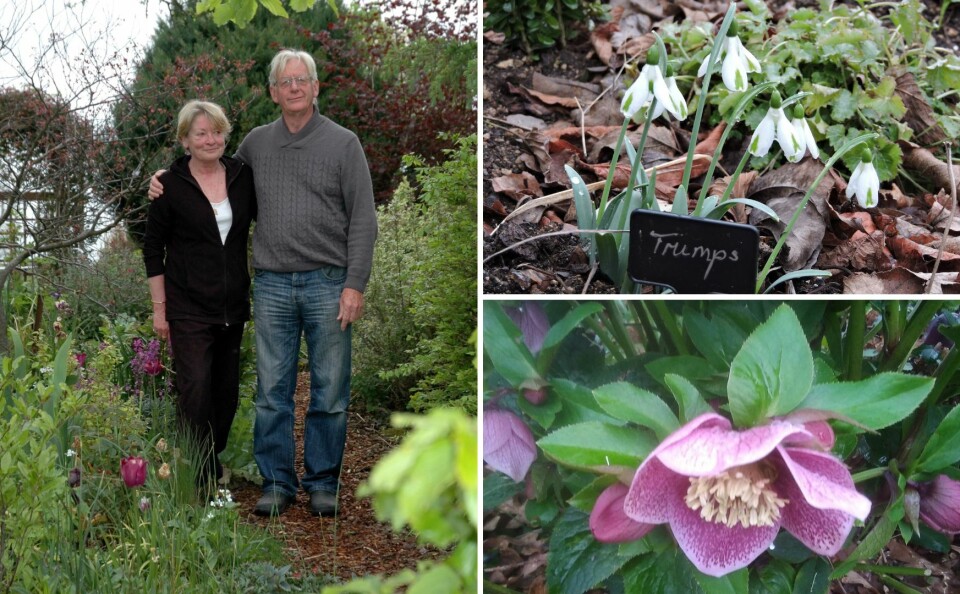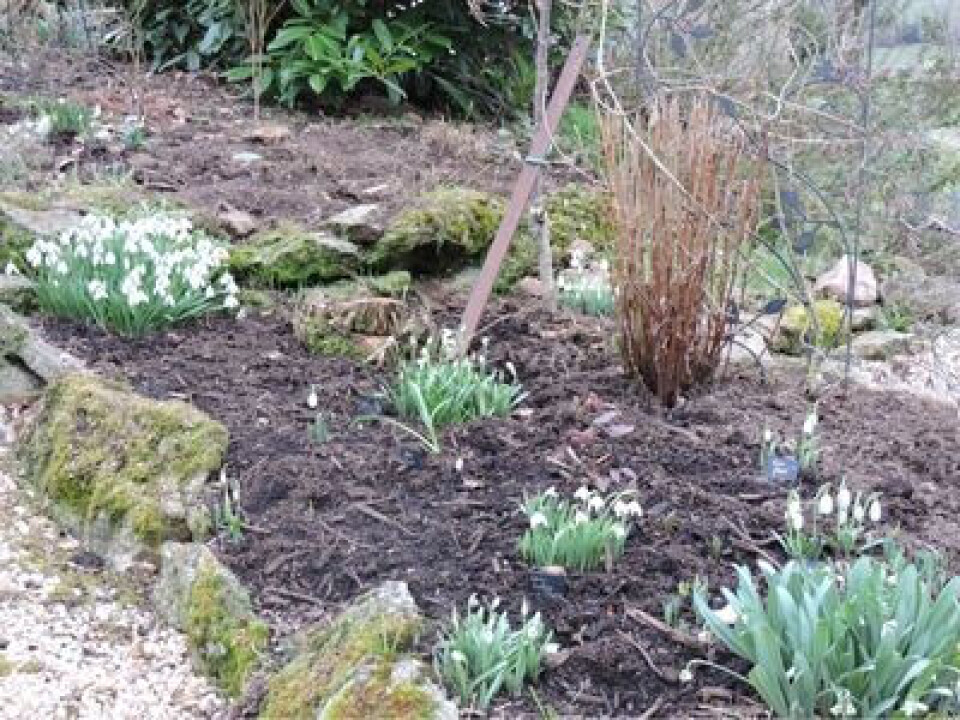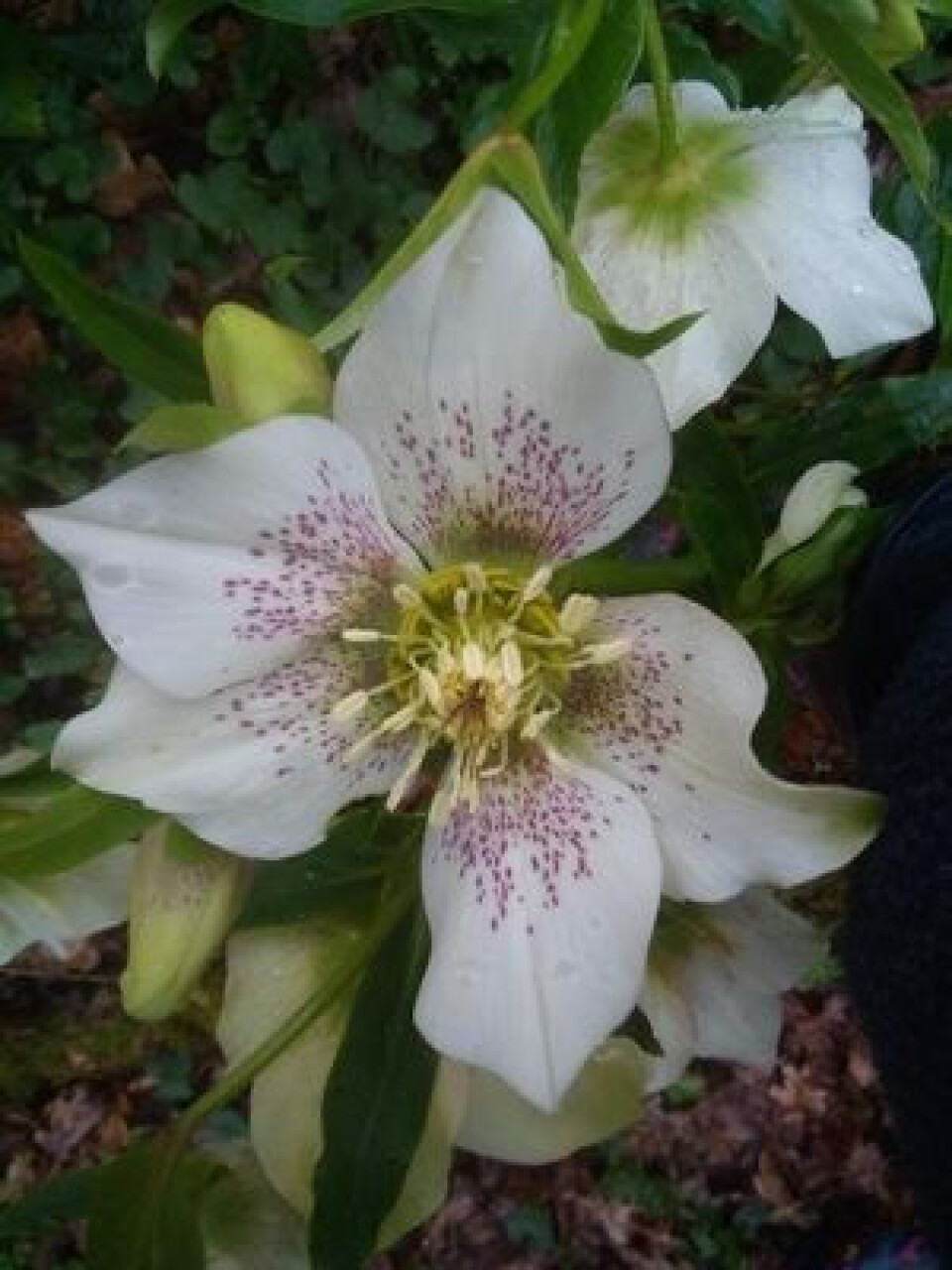-
What you should do to your garden in France in spring
Weeding, pruning, sowing, preparing the lawn…here is how to welcome sunnier days
-
Mimosa is pretty…but ‘posing threat to biodiversity’ in south of France
The flowers are prized in the region, but not everyone is thrilled to see their spread
-
Now is the time for people in France to ‘scarify’ their lawn
The practice, which should be done twice a year, enables the grass to thrive
Snowdrop obsession and hellebore heaven - two French gardens to visit
Two British gardeners in Haute Vienne and Creuse open their plots of paradise to share their passion for spring blooms

Celebrate a Valentine’s Day blessing of snowdrops with a visit to ‘Birdsong’, the garden of Sheila and Ian Cole in the Haute Vienne (7 La Poste Sud, 87160 Arnac-la-Poste. Tel: 05 55 60 67 40).
You do not have to be even vaguely snowdrop-obsessed to appreciate these valiantly cheerful flowers as they thrust their way through the cold winter ground, in company with hellebores and the beautifully marbled foliage of cyclamen.
The garden is open on Sunday 19 February, 11:00 to 15.00.
Cultivars planted in separate groups
Sheila and Ian have been gardening full-time here since 2009 and are rightly proud of the shady habitat they’ve created for snowdrops on once hot and dry land that was home only to brambles and nettles.
Read more: Snowdrops for hope and salvia for colour in a February French garden
Nothing has been wasted in this garden – even the slate from an old building attached to the house was used to create beautiful paths.
“I think when British people visit a snowdrop garden, they expect to see vast carpets of flower, but I have planted my special “drops” in separate groups – never with two similar cultivars together so they can’t be confused,” Sheila says.
“And I like to see them against the bare, black earth. A few days before the open day I go out and mulch with leaf mould or bought-in compost.”
French ladies close to tears at intricate markings
Over 300 varieties are now planted in the garden, testimony to Sheila’s passion, but you will find each clump carefully labelled and a host who is more than willing to share her extensive knowledge.

Photo: Sheila mulches around the snowdrop clumps for definition; Credit: Sheila and Ian Cole
Perhaps you are one of those who believe a snowdrop is a snowdrop? At Birdsong there’s an alternate universe.
Ian says, “We’ve had French ladies close to tears when shown the intricate differences between the markings on the flowers.”
However, Sheila points out that the main difference between snowdrop cultivars is often not the markings on the flowers themselves – although those little nuances are things to treasure – but the colour and growth habit of the foliage.
She says, “There are still two cultivars that I can never tell apart by flower – I have to look at their leaves.”
All started at snowdrop open day in Kent
Sheila first caught the snowdrop ‘bug’ in Britain.
On route for the coast one February from their home in Kent they were attracted by a sign that indicated a National Gardens Scheme snowdrop open day. ‘I wondered what on earth they were going to be looking at in February!’ she says.
When the couple arrived, they were greeted by gales of laughter coming from the terrace where visitors were enjoying tea and cake and discussing their shared passion in the cold winter air.
Read more: Gardening hardiness zones in France and how plants adapt to the cold
Nearly paid €1,700 for a bulb
“When I first started acquiring snowdrops, they were planted in the garden here in France while it was still only our holiday home, because I only had a courtyard with pots in Britain and snowdrops really like to be in the ground, not pots.”
She remembers that the first snowdrops she bought in 2008 were ‘Ophelia’, ‘Lady Beatrix Stanley’, ‘Silverwells’ and ‘Cordelia’, all at £5 the bulb.
A real afficionado can spend thousands on a single bulb and Ian recalls a certain amount of shock at discovering that his wife had made a bid of €1,700 for a ‘drop’ called ‘Golden Tears’.
She lost that particular online bidding war, but was she not nervous to spend so much on a bulb that might be easily lost in the garden, I asked?
“At first, I was, but not anymore. Bulbs are tough and my “specials” are always planted in aquatic baskets, which are then plunged into the soil.”
She uses a 50:50 mix of leaf mould and soil-based compost (or her own sandy soil), and plants the bulbs on a layer of sand for drainage before backfilling the pot.
“If you put the layer of sand down, you can see immediately where the bulbs should be sitting when you lift the aquatic pot to check on your bulbs.”
Read more: The French gardener inspired for 40 years by British winter planting
Planting and dividing
Sheila recommends, however, that beginners don’t spend a lot on a bulb, instead purchasing the cheaper types such as G. ‘Atkinsii’ or G. elwesii for naturalising in their own gardens, and recommends good, strong-growing cultivars such as ‘S. Arnott’ or elegant ‘Benhall Beauty’.
If you are gardening on a clay soil, Sheila advises you dig plenty of gritty material into the ground while planting, to prevent your bulbs rotting.
“They increase so quickly and are almost promiscuous, seeding themselves into gravel – I’m always having to dig them up and throw them away because they are so naughty.”
Sheila divides her bulbs in June and July. Some galanthophiles prefer to divide them ‘in the green’ (in February/March, when the foliage is visible) to avoid them drying out.
However, Sheila firmly believes that dividing ‘in the green’ can cause damage to the root system, from which it may take bulbs quite a few years to recover.
Coming to a gardening club near you
We frequently associate snowdrops with damper and cooler British gardens.
Do they suffer in the French heat? Not at all, in fact, one of the best snowdrop winters Sheila has experienced came after 12 weeks of terrible summer drought.
But the bulbs certainly do better in the Coles’ garden for the shaded protection that shrubby salvias and dahlias offer during their summer dormancy.
If you are not able to get to Sheila in her own garden and to purchase the bulbs she will have on sale, she visits gardening clubs and gives talks to spread the word and sell bulbs for the Open Gardens charity. For information about her club-visit agenda, ring her on 05 55 60 67 40.

Photo: Hellebores shine in Sue’s garden; Credit: Sue and Mick Lambert
Sue and Mick Lambert’s garden in the Creuse (16 Valaize, 23150 Saint-Pardoux-les-Cards. Tel: 05 55 62 32 86) also shines in winter and is open by appointment in February between Sunday 12 February and Sunday 19 February.
Sue has divided her garden into different areas and the shady side of the garden is home to her woodland walk, which should be flourishing in February, and features hellebores, daffodils, snowdrops and pulmonarias.
Related articles
Mild winter in France wreaks havoc on fruit producers and in gardens
January flowers in your French garden with scented viburnum
Mediterranean garden in south of France is a winter paradise
























